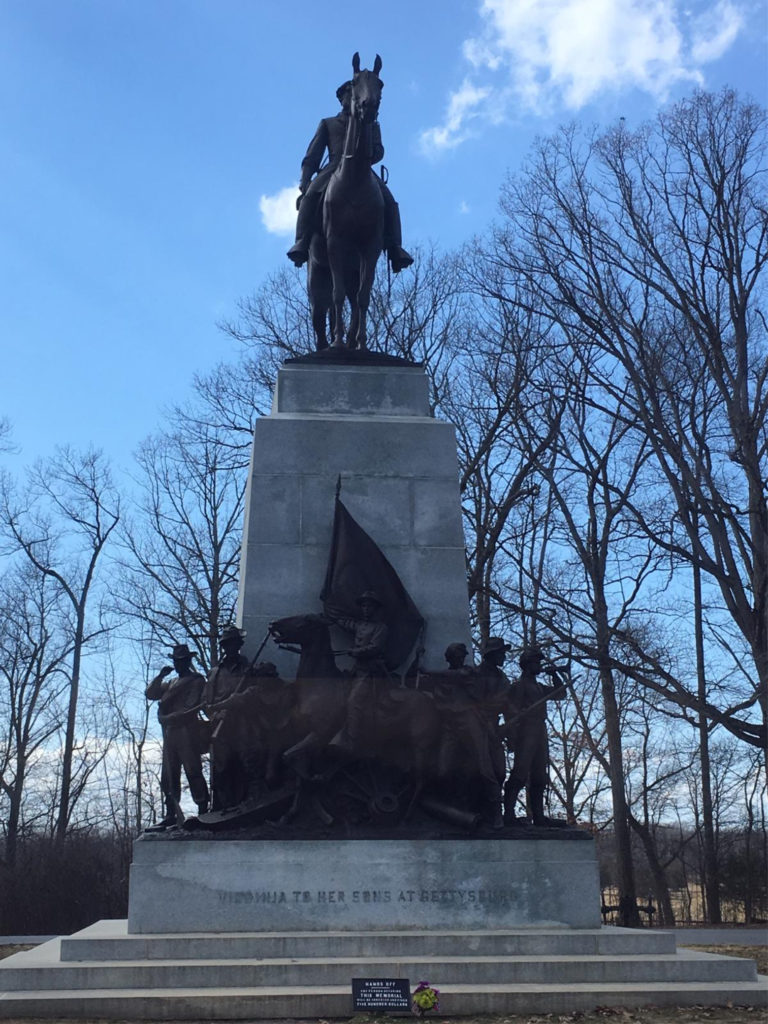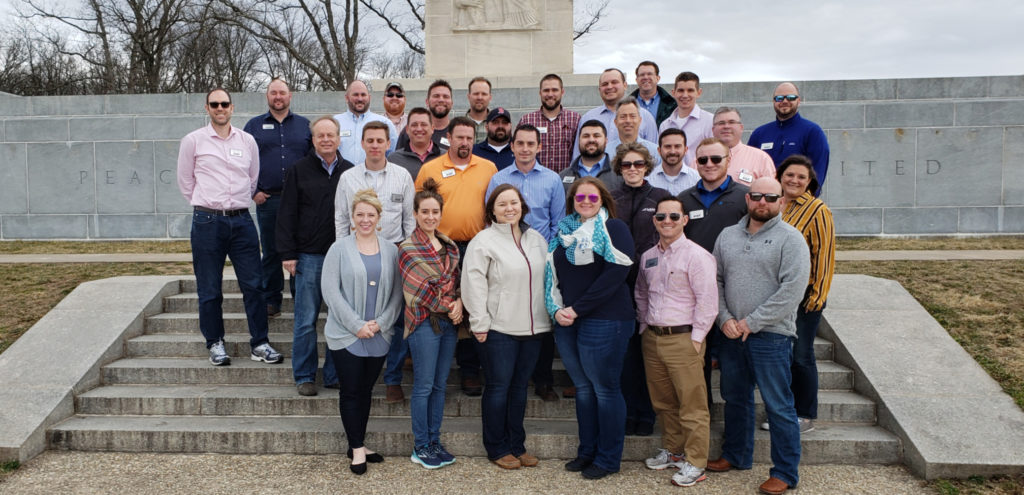By Jayma Appleby and Mark Inkrott
The Illinois Ag Leadership Class of 2020 took a look at leadership through the lens of one of the greatest battles to impact our country, the Battle of Gettysburg. To begin our day, we discussed a variety of leadership elements and styles that later played out during the battle, including parallel versus lateral thinking and the benefits of predictive thinking. These concepts came to life later in the day on the battlefield as we learned about General Meade’s (leader of the Union Army) anticipatory style of leadership. Having the insight as well as the sense to predict the Confederate’s next move, General Meade predicted Lee’s next move which ultimately resulted in a victory for the Union Army.

Gettysburg Guide Terry Fox speaks to the Class of 2020 in front of the General Reynolds Monument. Major General John F. Reynolds was the highest ranking officer killed at the Battle of Gettysburg and is one of the most senior officers to die in the Civil War.
The overarching theme of the day was the differing leadership styles of Robert E. Lee on the Confederate side and George Meade on the Union side. For instance, Lee’s leadership style was self-described in the following statement, “My mission is to the army to the battlefield prepared and positioned to fight and win. After that, it is up to my subordinates, events that occur and the will of God.” We saw multiple times, that because he did not solicit or encourage buy-in from his generals, he did not have the confidence in his strategy to succeed. Teamwork was lacking and generals took it upon themselves to diverge from the orders because they felt they knew better. Alternatively, General Meade led a team of generals who trusted him and followed him to secure the higher ground, a more advantageous position, even though they had fewer troops.

In life, we often have the opportunity to work with a team to provide leadership and guidance to get to a successful outcome or forward-thinking strategy. When a team feels like their input is heard, valued and considered, they are much more willing to follow a leader toward their strategy. A good leader is honest, competent, forward-looking, inspiration and credible. They instill confidence in their team.

Another concept that resonated throughout the day, both in the classroom and on the battlefield was the importance of having an offramp strategy. As successful as we anticipate we will be, whether in business or in battle, it is imperative to have a plan should things surprise us or not go as planned. For instance, we saw that the Confederate Army was overconfident coming into the battle with an 8-0-1 record, and thought it was not a matter of if, but when they won the battle. Therefore, they didn’t have an offramp strategy and pushed forward with increased confidence from tactical victories without looking at the bigger, overall strategy.
Sometimes efforts don’t happen as planned and not being prepared is not an excuse. We learned that every good plan has an offramp strategy and includes three elements: First, recognize we are in an escalating commitment. Secondly, and usually the most difficult is to admit we made a mistake. Finally, execution of the offramp strategy is key to ensuring we live to fight another day.

Memorial. The Eternal Light Peace Memorial was dedicated by President Franklin D. Roosevelt during the observance of the 75th anniversary of the Battle of Gettysburg, July 3, 1938.
Overall, the Battle of Gettysburg is rich with lessons in leadership that the Illinois Ag Leadership Class of 2020 can apply as leaders moving agriculture forward. We look forward to learning more tomorrow!

